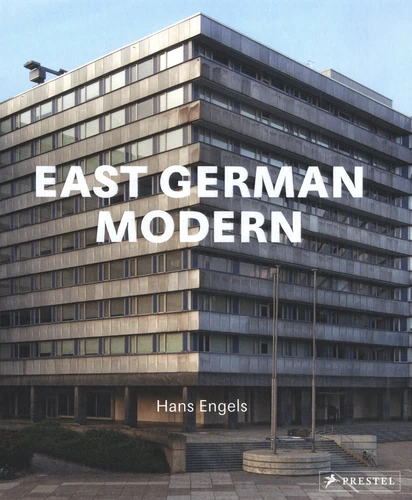East German Modern
Par :Formats :
- Paiement en ligne :
- Livraison à domicile ou en point Mondial Relay indisponible
- Retrait Click and Collect en magasin gratuit
- Nombre de pages206
- PrésentationRelié
- FormatGrand Format
- Poids1.37 kg
- Dimensions24,8 cm × 28,8 cm × 2,4 cm
- ISBN978-3-7913-8535-8
- EAN9783791385358
- Date de parution24/05/2019
- ÉditeurPrestel
- Rédacteur (rédigé par)Frank Peter Jäger
- ContributeurBen Kaden
Résumé
The buildings constructed in East Germany after the Second World War are often dismissed as drab, Soviet-style, prefabricated blocks of cement. But architecture in the former German Democratic Republic was created with an eye towards modernity and efficiency, and heralded the birth of a pioneering country with a new economic and social system. German architectural photographer Hans Engels travelled throughout East Germany to photograph iconic modernist buildings that survived demolition.
From cinemas to high-rises, restaurants to museums, department stores to transit stations, these buildings have all stood the test of time. While the philosophy that drove their design may be outdated, their retro appeal is stronger than ever.
From cinemas to high-rises, restaurants to museums, department stores to transit stations, these buildings have all stood the test of time. While the philosophy that drove their design may be outdated, their retro appeal is stronger than ever.
The buildings constructed in East Germany after the Second World War are often dismissed as drab, Soviet-style, prefabricated blocks of cement. But architecture in the former German Democratic Republic was created with an eye towards modernity and efficiency, and heralded the birth of a pioneering country with a new economic and social system. German architectural photographer Hans Engels travelled throughout East Germany to photograph iconic modernist buildings that survived demolition.
From cinemas to high-rises, restaurants to museums, department stores to transit stations, these buildings have all stood the test of time. While the philosophy that drove their design may be outdated, their retro appeal is stronger than ever.
From cinemas to high-rises, restaurants to museums, department stores to transit stations, these buildings have all stood the test of time. While the philosophy that drove their design may be outdated, their retro appeal is stronger than ever.


